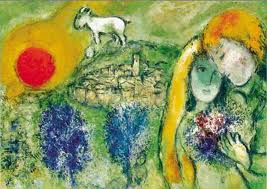“Heirloom” denotes a traditional tool that has been used from time immemorial, an inherited loom (tool). We use the heirloom-growing tradition for berries, which has stood the test of time.
 We start with the nutrients in soil, the main one being nitrogen. We use nitrogen from a combination of hay grasses we grow specifically to mulch berry plants. This nitrogen feeds soil biota, and in turn this biota feeds berry plant roots. This allows continuous improvement of soil fertility throughout the many years of a berry plant’s life. This hay mulch also provides other nutrients and micronutrients that give berries their unique aroma and flavor when fully ripe.
We start with the nutrients in soil, the main one being nitrogen. We use nitrogen from a combination of hay grasses we grow specifically to mulch berry plants. This nitrogen feeds soil biota, and in turn this biota feeds berry plant roots. This allows continuous improvement of soil fertility throughout the many years of a berry plant’s life. This hay mulch also provides other nutrients and micronutrients that give berries their unique aroma and flavor when fully ripe.
Our soil fertilized with hay mulch is so fertile that other native plants grow very well also, competing with our berry plants for food. We remove these other plants or control their size through manual labor. Though the heirloom way is expensive, the berries grow as intended, to provide many health benefits.
Another heirloom method we use is to plant rows of wild flowers that attract beneficial pests that eat berry-eating pests and thereby control their population.
We use the equivalent of crop rotation in growing berries. We interleave berry plant rows with different types and varieties that stop propagation of pests and diseases. This minimizes damage to the total crop.
There are many other heirloom practices that we apply on a daily basis. Each day on the farm is different.
The main principle of the heirloom tradition of growing is sharing. Good berries are desired not only by us, but by various fauna too. When a portion of the berry crops is eaten by various fauna or taken by other flora it makes the remaining berries that we harvest more expensive. Fauna signals that berries are healthy for eating, as their senses are stronger than ours.
Berries that are mouthwatering and so healthy seem to cost more, but when compared to the health value you obtain from eating them, they are a bargain.
